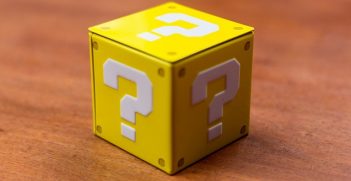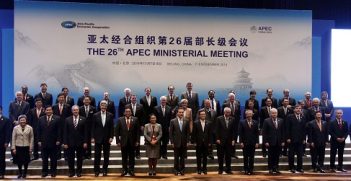The Abe Push Behind the Australian Sub Deal
If Japan’s submarine agreement with Australia goes ahead, this deal could signal an inseparable security relationship between Australia, Japan and the US.
In July 2014, the Abe government adopted the ‘Three Principles on Transfer of Defense Equipment and Technology’, which approved Japanese weapons exports as long as certain conditions are met.
Based on this new, less restrictive policy on weapons exports Japan has concluded two major deals. The first is to supply surface-to-air missile parts to the US and the second to conduct joint research on air-to-air missiles with the United Kingdom. The proposed Australian submarine deal would eclipse both of these in terms of scale and significance.
Japan is yet to respond to the Australian government’s announcement that there would be a ‘competitive evaluation process’ to build Australia’s next submarine. But the Japanese Minister for Defense, Gen Nakatani, expressed a wish to hold talks with the Australian government regarding the matter. The Japanese government now understands that the submarine procurement issue is intertwined with Australia’s domestic politics and ‘is keeping a close eye on Abbott’.
Despite critical commentary in the Japanese press on the Australian government’s policy backflip, speculation continues that Japan’s Soryu-class submarines are the most likely candidate to replace Australia’s ageing Collins-class submarines. The expectation is that cooperation with Japan will continue because Australian companies are ‘incapable of building submarines on their own’.
In early January 2015, the Japanese press reported that the Ministry of Defense (MOD) had proposed joint development and production of the submarine with Australia. Instead of exporting a completed Soryu-class submarine, the proposal suggested joint development of new technology for material that absorbs sound waves and special steel that would be used to manufacture the hull.
Japan would be in charge of producing the main parts of the hull and assembling the submarines, while Australia would be in charge of producing some of the parts as well as the final building and maintenance. A Japanese MOD official noted that assembling the submarines in Australia would lead to higher costs and might affect the quality and safety of the product.
Other reports point to Japanese caution about completely handing over its submarine technology to Australia. Submarines are categorised as the ‘most sensitive of all sensitive information’. For this reason the Japanese military, and especially the Maritime Self-Defense Force (MSDF) whose cooperation will be essential if the deal goes ahead, has major reservations about the deal. MSDF officers ‘don’t tell colleagues, let alone family members, where a submarine is headed after it leaves port’. Japan and the US, which share some information gathered by submarines, do not share the location or ability of each submarine.
But the Abe government judged that sharing Japan’s submarine technology with Australia would lead to a strengthening of the production capacity of Japan’s domestic enterprises. The fact that Prime Minister Abe decided to examine the provision of Soryu-class submarine technology to Australia despite opposition from the MOD was regarded as proof that he considers Australia to be a ‘quasi-ally’.
The Abe administration is gradually putting in place the necessary policy, institutional and financial support framework to enable Japan’s defence industries to become significant players in the international weapons and defence technology market. In 2015, the Japanese government will launch a Defence Equipment Agency in the MOD. The new agency will have centralised control over defence equipment development, acquisition and exports. It will lead the expansion of weapons exports and is part of the so-called ‘Abe line’ that links the development of defence enterprises with the government’s growth strategy.
The MOD’s 2014 Strategy on Defense Production and Technological Bases includes financial assistance for the overseas expansion of defence enterprises and funding to research institutions that work on developing technology that can be used in weapons and equipment. A new executive panel for promoting weapons exports and joint development was also appointed to the MOD in December 2014. It will help the ministry to respond to the many requests for a framework to support the private enterprises involved and establish a system to determine the needs and technological standards of partner countries.
While the government has given the green light to weapons sales, companies that manufacture defence equipment are more mindful of the difficult practicalities of particular deals and the need to gain real profits. Some have strong reservations about the Australian submarine deal. An executive of Kawasaki Heavy Industries remarked ‘there is no way Australia will be able to look after the submarines properly even if we give it to them’. But at this stage it is ‘almost impossible’ for a private company to become even partially involved in the operations of the Australian Navy.
If the agreement goes ahead this deal could signal an inseparable security relationship between Australia, Japan and the US with both Japan and the US supplying their relevant technology to Australia and cooperating in Australia’s submarine development.
For Prime Minister Abe, weapons exports are a key element in a broader strategy of building a network of ‘quasi-alliances’, which includes Australia, India and Southeast Asian countries, with the Japan–US alliance maintained as the strategic ‘trump card’.
Aurelia George Mulgan is a Professor at the University of New South Wales, Canberra. This article was originally published in The East Asia Forum on 16 March 2015. It is republished with permission.





